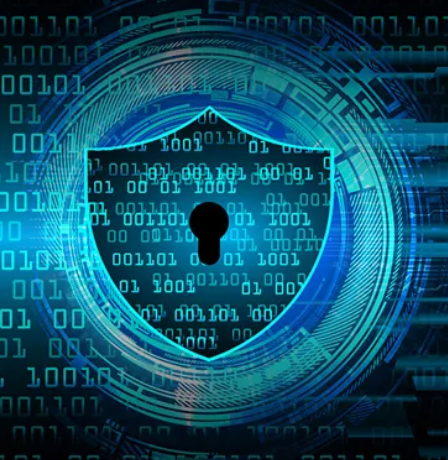Advancing Cybersecurity with Continuous Control Monitoring
- 166 Views
- admin
- 03/23/2025
- Cybersecurity
In an era where cyber threats are both persistent and increasingly sophisticated, organizations must move beyond periodic assessments and adopt continuous security practices. Continuous Control Monitoring (CCM) offers a modern, proactive framework to help businesses monitor, assess, and strengthen their cybersecurity posture in real time.
The Foundation of Continuous Monitoring
Traditional methods, such as annual audits or quarterly risk reviews, often leave security gaps due to outdated insights. In contrast, continuous monitoring enables organizations to track control effectiveness on an ongoing basis. This real-time visibility reduces the window of exposure and improves overall risk responsiveness.
Manual control tracking—especially through static tools like spreadsheets—often becomes ineffective as organizations grow. Cybersecurity professionals may complete an assessment only to find that their findings are obsolete weeks later due to environmental or operational changes. With hundreds of controls to manage across complex systems, automation becomes essential.
Key Processes That Drive Continuous Monitoring
Vulnerability Management
Automated vulnerability scans constantly probe systems for weaknesses, helping identify and address potential entry points before they’re exploited. Coupled with effective patch management, this approach ensures that known issues are resolved quickly and efficiently.
Incident Detection and Response
A robust incident response capability enables swift containment and recovery after a security breach. Forensic tools further support investigations by revealing how an incident occurred and guiding adjustments to prevent similar events in the future.
Change Management
Modifications to systems or processes can inadvertently introduce risks. An effective change management process ensures all updates undergo thorough review, reducing the likelihood of accidental misconfigurations.
Security Awareness Training
Employees are often the first line of defense. Regular training helps instill a security-conscious culture, ensuring staff are prepared to recognize and report suspicious activities.
Threat Intelligence Integration
Incorporating external threat feeds provides up-to-date insights into emerging attack methods. This intelligence enables organizations to adapt controls based on the evolving threat landscape.
Core Technologies Supporting Continuous Monitoring
Security Information and Event Management (SIEM)
SIEM platforms centralize data collection from systems across the IT environment. By analyzing logs from firewalls, endpoints, applications, and servers, SIEMs can detect patterns indicating malicious activity. Correlation engines within SIEMs make it possible to uncover complex attacks by linking events across sources.
Advanced SIEM tools also support compliance reporting, integrate with threat feeds, and automate alert responses—making them a central component of a broader continuous monitoring strategy.
Endpoint Detection and Response (EDR)
EDR solutions monitor activity on individual devices, flagging suspicious behavior in real time. From detecting fileless malware to identifying unusual user actions, EDR tools enhance visibility into how threats might materialize at the endpoint level.
With forensic capabilities and automation features, EDR systems help teams respond quickly and investigate incidents thoroughly, reducing dwell time and strengthening endpoint security.
Cloud Security Posture Management (CSPM)
For businesses operating in cloud environments, CSPM tools ensure that configurations align with best practices. These systems provide continuous assessments to detect misconfigurations and compliance violations in real-time.
CSPM platforms integrate with development pipelines to ensure security is embedded early in the software lifecycle, promoting a “shift-left” mindset that catches issues before deployment.
Additional Tools That Enhance Continuous Monitoring
- Vulnerability Management Systems: Identify, prioritize, and track vulnerabilities across assets.
- Configuration Management Tools: Maintain consistent system settings to avoid unintended security exposures.
- Identity and Access Management (IAM): Enforce appropriate user permissions and monitor account activity.
- Security Orchestration, Automation, and Response (SOAR): Coordinate alerts, automate incident responses, and streamline security workflows.
Together, these tools form a technology ecosystem that supports a layered and responsive security strategy.
The Strategic Benefits of a Continuous Approach
CCM transforms how organizations manage cybersecurity by providing real-time visibility into security posture. This approach reduces reliance on manual tasks and improves the speed at which threats can be detected and addressed.
Real-Time Risk Awareness
By continuously evaluating control performance and compliance, teams gain insights that would otherwise only surface during periodic reviews. This awareness allows faster adaptation to new risks.
Improved Operational Efficiency
Automating repetitive tasks like log analysis, patch checks, and reporting frees up security professionals to focus on strategic planning and incident handling.
Stronger Stakeholder Confidence
CCM enhances communication with executive leadership and boards by offering up-to-date reporting that reflects actual risk exposure. Tools like Governance Dashboards present data in formats that resonate with business leaders, making it easier to secure buy-in for investments.
Closing Thoughts
Cybersecurity is no longer a function that can afford to wait for quarterly reviews or rely on static controls. A continuous monitoring approach, powered by technologies like SIEM, EDR, and CSPM, provides the agility and insight required to navigate today’s threat landscape.
By integrating automated, real-time processes into their cybersecurity framework, organizations can reduce risks, respond faster to incidents, and maintain a posture that evolves alongside the threats they face. The shift to CCM isn’t just about technology—it’s about making cybersecurity a dynamic and strategic business function.
Recent Posts
- How AI is Revolutionizing Architectural Design: A Look at Tools, Trends, and the Future
- Streamlining Cyber Risk Assessments Through Automation
- Understanding the Difference Between Blockchain and Distributed Ledger Technology
- Is Bitcoin Mining Still a Viable Venture in 2025?
- Exploring AI: Unveiling Possibilities, Challenges, and Future Implications

